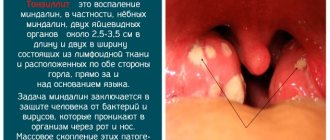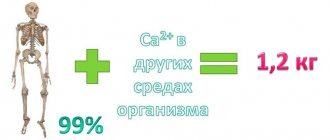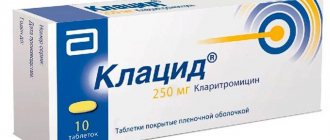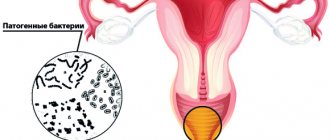pharmachologic effect
A broad-spectrum antimicrobial drug from the group of fluoroquinolones, a levorotatory isomer of ofloxacin.
Levofloxacin blocks DNA gyrase (topoisomerase II) and topoisomerase IV, disrupts supercoiling and cross-linking of DNA breaks, inhibits DNA synthesis, and causes profound morphological changes in the cytoplasm, cell wall and membranes.
Levofloxacin is active against most strains of microorganisms both in vitro and in vivo.
In vivo effective against Enterococcus faecalis, Staphylococcus aureus, Staphylococcus epidermidis, Streptococcus pneumoniae, Streptococcus. pyogenes and Streptococcus agalactiae, Viridans group streptococci, Enterobacter cloacae, Enterobacter aerogenes, Enterobacter agglomerans, Enterobacter sakazakii, Escherichia coli, Haemophilus influenzae, Haemophilus parainfluenzae, Klebsiella pneumoniae, Klebsiella oxytoca, Legionella pneumoniae, Moraxella catarrhalis, Prote us mirabilis, Pseudomonas aeruginosa, Pseudomonas fluorescens ; Chlamydia pneumoniae, Mycoplasma - pneumoniae, Acinetobacter anitratus, Acinetobacter baumannii, Acinetobacter calcoaceticus, Bordetella pertussis, Citrobacter diversus, Citrobacter freundii, Morganella morganii, Proteus vulgaris, Providencia rettgeri, Providencia stuartii, Serratia marcescens, Clostridium perfringens.
In vitro:
Sensitive microorganisms (MIC < 2 mg/ml).
Aerobic gram-positive microorganisms: Corynebacterium diphtheriae, Enterococcus spp., Listeria monocytogenes, Staphylococcus spp. (coagulase-negative methicillin-sensitive/methicillin-moderately sensitive strains), Staphylococcus spp. (СNS), Streptococcus spp. groups C and G.
Aerobic gram-negative microorganisms: Acinetobacter spp., Actinobacillus actinomycetemcomitans, Eikenella corrodens, Enterobacter spp., Gardnerella vaginalis, Haemophilus ducreyi, Helicobacter pylori, Klebsiella spp., Neisseria gonorrhoeae (strains producing and not producing penicillinase), Neisseria meningitidis, Pasteurella sp p. (including Pasteurella conis, Pasteurella dagmatis, Pasteurella multocida), Providencia spp., Pseudomonas spp., Salmonella spp., Serratia spp.
Anaerobic microorganisms: Bacteroides fragilis, Bifidobacterium spp., Fusobacterium spp., Peptostreptococcus spp., Propionibacterium spp., Veilonella spp.
Other microorganisms: Bartonella spp., Chlamydia psittaci, Chlamydia trachomatis, Legionella spp., Mycobacterium spp. (including Mycobacterium leprae, Mycobacterium tuberculosis), Mycoplasma hominis, Rickettsia spp., Ureaplasma urealyticum.
Levofloxacin is moderately active (MIC > 4 mg/l):
Aerobic gram-positive microorganisms: Corynebacterium urealyticum, Corynebacterium xerosis, Enterococcus faecium, Staphylococcus epidermidis (methicillin-resistant strains), Staphylococcus haemolyticus (methicillin-resistant strains).
Aerobic gram-negative microorganisms: Burkholderia cepacia, Campilobacter jejuni, Campilobacter coli.
Anaerobic microorganisms: Bacteroides thetaiotaomicron, Bacteroides vulgatus, Bacteroides ovatus, Prevotella spp., Porphyromonas spp.
Resistant to levofoloxacin (MIC > 8 mg/l):
Aerobic gram-positive microorganisms: Corynebacterium jeikeium, Staphylococcus aureus (methicillin-resistant strains), Staphylococcus spp. (coagulase-negative methicillin-resistant strains).
Aerobic gram-negative microorganisms: Alcaligenes xylosoxidans.
Other microorganisms: Mycobacterium avium.
Compound
Active substance:
levofloxacin - 250 or 500 mg.
Excipients:
Kollidon CL (crospovidone), magnesium stearate, sodium lauryl sulfate, Kollidon 30 (polyvinylpyrrolidone), microcrystalline cellulose;
shell:
iron oxide yellow, iron oxide red, hydroxypropyl methylcellulose (hypromellose), hydroxypropylcellulose, polyethylene glycol 6000 (macrogol), titanium dioxide.
Description
Tablets, coated with a pinkish-cream color, oblong, biconvex with a scored line. The cross section shows two layers.
Indications for use
Infectious and inflammatory diseases caused by microorganisms sensitive to the drug:
- acute sinusitis;
- exacerbation of chronic bronchitis;
- community-acquired pneumonia;
- complicated kidney and urinary tract infections (including pyelonephritis);
- uncomplicated urinary tract infections;
- bacterial prostatitis;
- infections of the skin and soft tissues;
- intra-abdominal infection;
- for complex treatment of drug-resistant forms of tuberculosis.
Overdose
Symptoms of an overdose of Levofloxacin appear at the level of the central nervous system (confusion, dizziness, disturbances of consciousness and seizures of the epileptic type). In addition, gastrointestinal disorders (for example, nausea) and erosive lesions of the mucous membranes may occur.
In studies conducted with supra-therapeutic doses of levofloxacin, prolongation of the QT interval has been shown.
Treatment should be focused on the existing symptoms. Levofloxacin is not eliminated by dialysis (hemodialysis, peritoneal dialysis and continuous peritoneal dialysis). There is no specific antidote (counteracting substance).
Interaction with other drugs
There are reports of a pronounced decrease in the threshold of convulsive readiness with the simultaneous use of quinolones and substances that can, in turn, reduce the cerebral threshold of convulsive readiness. This also applies equally to the simultaneous use of quinolones and theophylline, fenbufen or similar non-steroidal anti-inflammatory drugs (drugs for the treatment of rheumatic diseases).
The effect of the drug levofloxacin is significantly weakened when used simultaneously with sucralfate (a drug for protecting the gastric mucosa). The same thing happens with the simultaneous use of magnesium- or aluminum-containing antacids (drugs for the treatment of heartburn and gastralgia), as well as iron salts (drugs for the treatment of anemia). Levofloxacin should be taken at least 2 hours before or 2 hours after taking these medications. No interaction was detected with calcium carbonate.
When using vitamin K antagonists simultaneously, monitoring of the blood coagulation system is necessary.
The elimination (renal clearance) of levofloxacin is slightly slowed down by the action of cimetidine and probenecid. It should be noted that this interaction has virtually no clinical significance. However, with the simultaneous use of drugs such as probenecid and cimetidine, which block a certain excretion pathway (tubular secretion), treatment with levofloxacin should be carried out with caution. This applies primarily to patients with limited renal function.
Levofloxacin slightly increases the half-life of cyclosporine.
Taking glucocorticosteroids increases the risk of tendon rupture.
Directions for use and doses
Inside, before meals or between meals. Do not chew the tablets and take them with a sufficient amount of liquid (0.5 to 1 glass). Doses are determined by the nature and severity of the infection, as well as the sensitivity of the suspected pathogen.
For patients with normal or moderately reduced renal function (creatinine clearance > 50 ml/min), the following dosage regimen is recommended:
Sinusitis: 500 mg 1 time per day. The duration of treatment is 10-14 days.
Exacerbation of chronic bronchitis: 250 mg or 500 mg 1 time per day. Duration of treatment is 7-10 days.
Community-acquired pneumonia: 500 mg 1-2 times a day. The duration of treatment is 7-14 days.
Uncomplicated urinary tract infections: 250 mg once a day. The duration of treatment is 3 days.
Prostatitis 500 mg - 1 time per day. Duration of treatment - 28 days.
Complicated urinary tract infections, including pyelonephritis, 250 mg once a day. Duration of treatment is 7-10 days.
Skin and soft tissue infections: 250 mg once a day or 500 mg 1-2 times a day. Duration of treatment is 7-14 days.
Intra-abdominal infection: 500 mg 1 time per day. Duration of treatment is 7-14 days (in combination with antibacterial drugs acting on anaerobic flora).
Complex treatment of drug-resistant forms of tuberculosis: 500 mg 1-2 times a day. Duration of treatment is up to 3 months.
Floracid
Active substance:
Levofloxacin*
Pharmgroup:
Quinolones/fluoroquinolones
Analogs for the active substance:Glevo Ivatsin Lebel Levolet R Levotek Levoflox Levofloxabol Levofloxacin Levofloxacin STADA Levofloxacin-Teva Levofloxacin hemihydrate Levofloxacin hemihydrate Leflobakt Lefoccin Maklevo OD-Levox Oftaquix Remedia Signitsef Tavanik Tanflomed Flexid Hyleflox Ecolevid Eleflox | Application area:Abdominal infection Soft tissue abscess Allergic bronchitis Bacterial or fungal skin infection Bacterial skin infections Bacterial urinary tract infections Bacterial urinary tract infections Bacterial infections of the genitourinary system Bacterial soft tissue infections Bacterial skin infections Bacterial skin lesions Bacteriuria Bacteriuria asymptomatic Chronic latent bacteriuria Asymptomatic bacteriuria Asymptomatic massive bacteriuria Viral skin infection Viral skin infections Community-acquired pneumonia Nosocomial pneumonia Intraperitoneal infections Intra-abdominal infections Fiber inflammation Inflammation of the skin at injection sites Inflammation of the paranasal sinuses Inflammatory disease of the respiratory tract Inflammatory disease of the urinary tract Inflammatory disease of the genitourinary tract Inflammatory diseases of the bladder and urinary tract Inflammatory diseases of the paranasal sinuses Inflammatory diseases of the urinary system Inflammatory diseases of the urinary tract Inflammatory diseases of the urogenital system Inflammatory skin diseases Pustular skin disease Pustular skin diseases Purulent-inflammatory disease of the skin and soft tissues Purulent-inflammatory skin diseases Purulent-inflammatory diseases of the skin and its appendages Purulent-inflammatory diseases of soft tissues Purulent-inflammatory processes of the paranasal sinuses Purulent skin infections Purulent soft tissue infections Hospital pneumonia Hospital pneumonia Fungal diseases of the urogenital tract Fungal infections of the urinary tract Diffuse peritonitis Bronchial disease Interstitial pneumonia Abdominal infections Abdominal infections Skin infections Infections of the skin and skin structures Urinary tract infections Urinary tract infections Urinary tract infections Urinary tract infections Urinary tract infections Urinary tract infections caused by enterococci or mixed flora Uncomplicated genitourinary tract infections Complicated urinary tract infections Respiratory infections Infections of the genitourinary system Urogenital infections Infectious and inflammatory disease of ENT organs Skin infection Infectious skin diseases Urinary tract infections Abdominal infection Gastrointestinal tract infection Skin infection Infection of the skin and its appendages Infection of the skin and subcutaneous structures Infection of the skin and mucous membranes Skin infection Urinary tract infection Urinary tract infection Urinary tract infection Urinary tract infection Urinary tract infection Sinus infection Urogenital tract infection Qatar smoker Cough due to inflammatory diseases of the lungs and bronchi Skin bacterial infections Combined sinusitis Necrotizing subcutaneous infections Uncomplicated urinary tract infections Uncomplicated skin infections Uncomplicated urinary tract infections Uncomplicated urinary tract infections Uncomplicated genitourinary tract infections Uncomplicated soft tissue infections Non-pneumococcal pneumonia Exacerbation of sinusitis Exacerbation of chronic bronchitis |
special instructions
When prescribing Floracid® to elderly patients, it should be borne in mind that patients in this group often have impaired renal function.
In case of severe pneumonia caused by pneumococcus, Floracid® may not be effective enough. Hospital-acquired infections caused by Pseudomonas aeruginosa may require combination treatment.
During treatment with Floracid®, it is possible to develop an attack of seizures in patients with previous brain damage caused, for example, by a stroke or severe trauma.
Despite the fact that photosensitivity is observed very rarely when using the drug Floracid®, in order to avoid its development, patients should avoid exposure to the sun or ultraviolet irradiation.
If pseudomembranous colitis is suspected, Floracid® should be immediately discontinued and appropriate treatment initiated. In such cases, drugs that inhibit intestinal motility should not be used.
In elderly patients, when using the drug Floracid®, the likelihood of developing tendinitis increases. When using glucocorticosteroids, the risk of tendon rupture increases. If tendonitis is suspected, Floracid® should be immediately discontinued and appropriate treatment should be initiated, ensuring the affected area remains at rest.
When using vitamin K antagonists simultaneously, monitoring of the blood coagulation system is necessary.
In patients with glucose-6-phosphate dehydrogenase deficiency, hemolysis is possible.
During the treatment period, care must be taken when driving vehicles and engaging in other potentially hazardous activities that require increased concentration and speed of psychomotor reactions.
Contraindications
- hypersensitivity to levofloxacin or other quinolones;
- epilepsy;
- tendon lesions due to previous treatment with quinolones;
- childhood and adolescence (up to 18 years);
- pregnancy and lactation period.
Carefully
The drug should be used with caution in the elderly, due to the high likelihood of a concomitant decrease in renal function, with deficiency of glucose-6-phosphate dehydrogenase.








